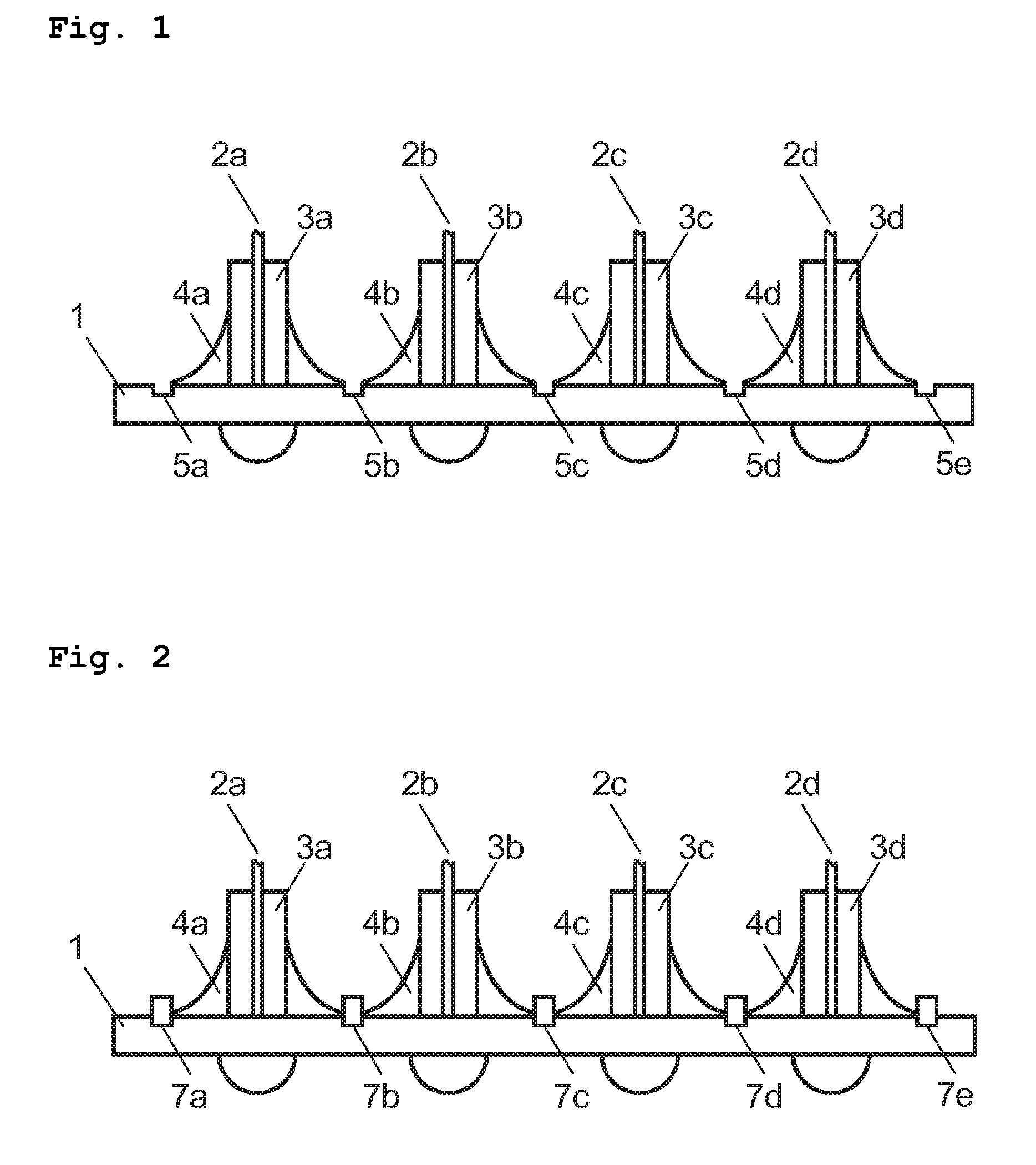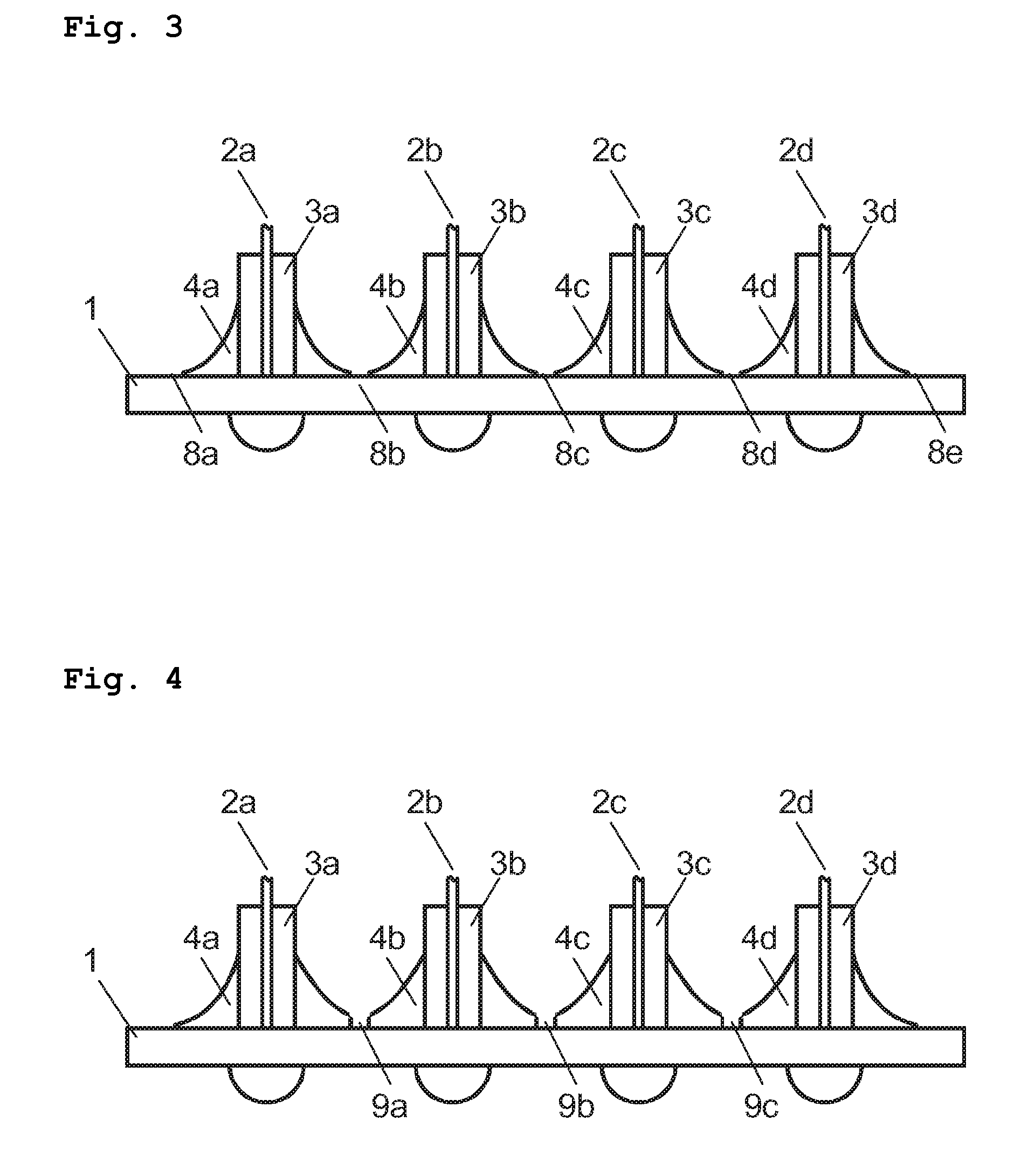Lens Arrangement for Optical Rotary Joints
a technology of optical rotary joints and lenses, applied in the field of optical rotary joints and lens systems, can solve problems such as unexpected early failures, and achieve the effect of preventing bonding and increasing reliability
- Summary
- Abstract
- Description
- Claims
- Application Information
AI Technical Summary
Benefits of technology
Problems solved by technology
Method used
Image
Examples
first embodiment
[0047]FIG. 13 shows an optical arrangement having bores 22, 23 for supplying UV light to an adhesive joint 4. A first part 20 (first optical component) is fixed to a second part 21 (second optical component) by means of an adhesive 4. In this example, the first part 20 and the second part 21 are not transparent to light, and in some cases, may exhibit high attenuation of UV light. One of the parts 20, 21 can be, for example, a ferrule or another fiber holder comprised of a material such as a metal or a ceramic. Curing of the adhesive 4 by lateral light irradiation between the first part 20 and the second part 21 is hardly possible, because light must be introduced into a relatively narrow gap (i.e., the gap between the first part 20 and the second part 21) to the far inside of the adhesive, and only small radiation intensities can be achieved in the inside because of light absorption by the adhesive.
[0048]Therefore, light-guiding channels such as, for example, the first bore 22 and ...
second embodiment
[0049]FIG. 14 shows an optical arrangement, similar to that shown in FIG. 13, but with a transparent intermediate substrate 24. A transparent intermediate substrate 24, which has a boundary face adjacent to the adhesive 4, is provided between the first part 20 and the second part 21. The transparent intermediate substrate 24 preferably has a low transit attenuation for UV light and is preferably designed so that it achieves a uniform light deflection of outside light coupled laterally into the adhesive 4.
third embodiment
[0050]FIG. 15 shows an optical arrangement with a transparent intermediate substrate 24. In FIG. 15, UV radiation 27 is coupled into the intermediate substrate 24 laterally from an external light source (not shown) by means of a light guide 28. The light conducted in the intermediate substrate 24 is then deflected into the adhesive 4, as illustrated by arrows.
PUM
 Login to View More
Login to View More Abstract
Description
Claims
Application Information
 Login to View More
Login to View More - R&D
- Intellectual Property
- Life Sciences
- Materials
- Tech Scout
- Unparalleled Data Quality
- Higher Quality Content
- 60% Fewer Hallucinations
Browse by: Latest US Patents, China's latest patents, Technical Efficacy Thesaurus, Application Domain, Technology Topic, Popular Technical Reports.
© 2025 PatSnap. All rights reserved.Legal|Privacy policy|Modern Slavery Act Transparency Statement|Sitemap|About US| Contact US: help@patsnap.com



